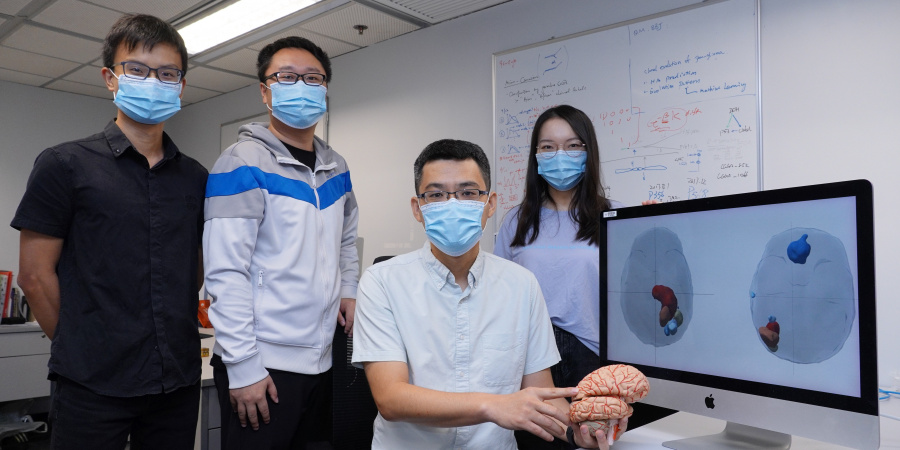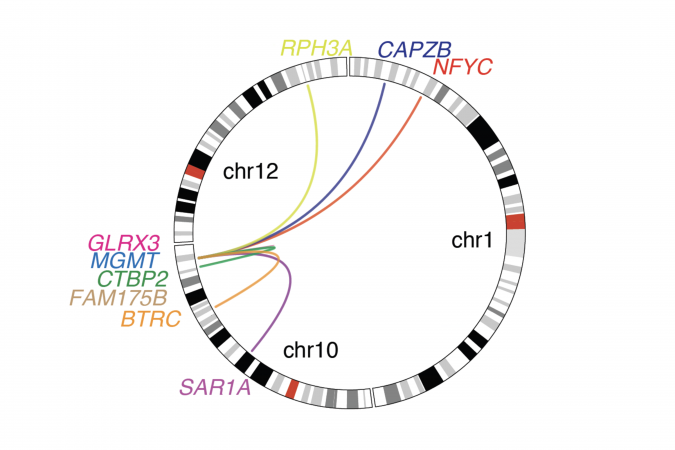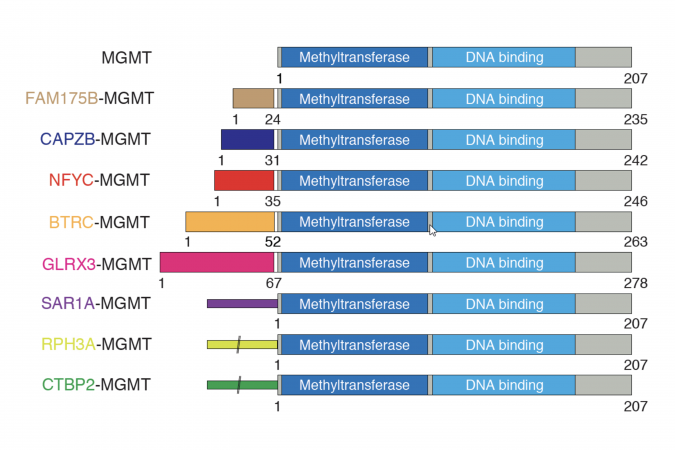科大研究团队解开胶质瘤病人的化学抗性机制
由香港科技大学(科大)、北京市神经外科研究所,西班牙国家癌症研究中心(CNIO)共同领导的国际科研团队,近日发现一种能解释为何胶质瘤 - 一种常见而具攻击性的脑瘤,其病人会出现化学抗性(chemo-resistance)的机制,或有助及早辨认有抗药性的脑癌病人。
现时,主要治疗胶质瘤的是一种结合放射治疗和化学治疗的药物–替莫唑胺(temozolomide, TMZ)。这种疗法可延长病人的整体生存时间,但是,大部分病人的肿瘤都会复发,并对TMZ产生抗药性。
为了揭开个中原因,由科大生命科学部兼化学及生物工程学系助理教授王吉光领导的计算基因组学实验室(Wang Genomics Lab)研究团队,利用计算机计算分析大量曾使用TMZ治疗的复发肿瘤个案数据–包括已公开的个案,以及由北京市神经外科研究所江涛教授团队收集的个案。团队发现,在部分复发肿瘤之中,其染色体 10出现易位。其后,CNIO的团队利用癌细胞株和动物模型,验证基因重组的生物学功能。
基因易位可显著地提高一种名为MGMT的基因的表达能力*,这基因能修复受TMZ破坏的癌细胞的DNA,导致治疗失效。这项研究亦发现此类易位只出现于复发的肿癌之中,显示化学抗性可能是由于治疗本身而引发的后果。
王教授表示:「我们期望透过揭示这种机制,能帮助研发相关测试,以及早辨认具抗药性的病人,协助医生决定该病人是否应该继续以TMZ治疗。尽管现时治疗胶质瘤的药物非常有限,我盼望这发现能有助研发化学抗性的快速测试,把握拯救病人的黄金时机,以避免他们接受没有效果的治疗。」
领导CNIO研究团队的Massimo SQUATRITO博士亦表示,下一步将是为对TMZ产生抗药性的病人,发展新型的介入性治疗。
这项研究的结果已刚于顶级科学期刊《自然通讯》中发表。
*MGMT的表达能力得以提高后,其在细胞中的活性便能大大提升,可更有效地修复受TMZ 破坏的癌细胞的DNA
了解更多王教授的其他研究:
香港科技大学研究人员发现基因突变机制 为致命脑癌患者带来新治疗线索
了解其他相关的研究:
科大研究团队利用高性能计算 发现RNA聚合酶维持基因转录过程高度准确的机制
有关香港科技大学
香港科技大学(www.ust.hk)是国际知名的研究型大学,其科学、工程、商业管理及人文社会科学领域,均臻达世界一流水平。科大校园国际化,提供全人教育及跨学科研究,培育具国际视野、创业精神及创新思维的优秀人才。科大的研究于香港的大学教育资助委员会「2014研究评审工作」获得最多「世界领先」评级,亦于最新的《泰晤士高等教育全球年轻大学排名榜2020》中排行第一,而科大的毕业生在2019年度的全球大学就业能力调查排名第10位,位列大中华院校之首。
About the CNIO(只有英文)
The CNIO is a Spanish public institution dedicated to the research, diagnosis and treatment of cancer, and affiliated to the Carlos III Institute of Health (Ministry of Science, Innovation and Universities). It is one of the 10 leading cancer research centres in the world (Scimago Institutions Rankings World Report; Nature Index) and covers the entire R&D and Innovation spectrum, from basic research to the clinic, with a view to transferring the results quickly and efficiently to the National Health System and to the pharmaceutical and biotechnology market.
The CNIO has an Experimental Therapeutics Program that covers the initial stages of the development of drugs directed against the therapeutic targets its scientists are working on. Some of the CNIO’s compounds have been licensed to international pharmaceutical companies. In addition, the CNIO is actively involved in ‘open innovation’ programs of international pharmaceutical companies, which has resulted in an influx of more than 25 million euros into the CNIO in the past six years. Finally, three spin-off companies have emerged from the CNIO, which have also allowed patients to benefit from the centre’s developments. These data reflect the Institution’s commitment to innovation and technology transfer and illustrate the importance of public-private collaboration for the advancement in the diagnosis and treatment of disease.
(原文由香港科技大学公共事务处在此发布。)



